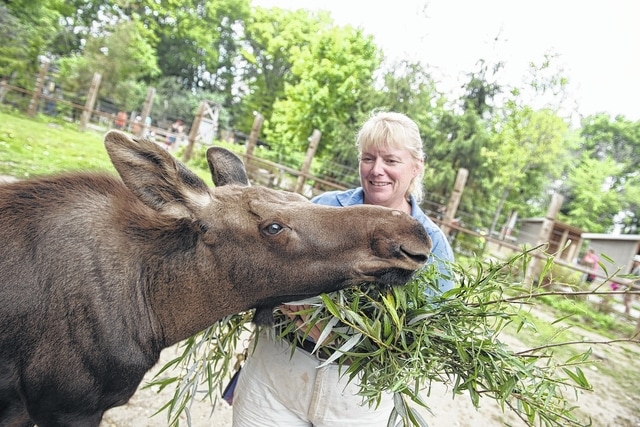
The next time you go to the Columbus Zoo and Aquarium, you might see your favorite animal eating browse from Delaware.
Browse is a term used by zoological garden staff to describe edible plants, shrubs and trees.
“The city of Delaware is partnering with the Columbus Zoo on its ‘Browse Program,’” said city community affairs coordinator Lee Yoakum, in an email. “The zoo partners with us and other communities to take our tree clippings to help feed animals.”
For example, next week the Powell-based zoo is expected to pick up some pruned branches from an apartment complex.
“This is a great opportunity to work with the zoo, and also help us out as well,” Yoakum said. “We don’t have any exact figures, but it does save us manpower and costs. This is also environmentally friendly — we reduce vehicle road miles, maintenance costs, fuel costs and vehicle emissions.”
It also keeps the browse out of the landfill.
“The browse program at the Columbus Zoo and Aquarium is important because it adds to the nutrition of the animals in our care,” said zoo spokeswoman Jennifer Wilson, in an email. “We work very hard to provide our animals with balanced diets and using browse is essential because it mimics the roughage animals may find in their native regions. They are a good source of fiber and are excellent for animals’ teeth and digestion.
“Browse is also used as enrichment for our animals as it allows for natural behavior,” Wilson said. “Using giraffes as an example, zookeepers can hang browse up high so the animals have to think and problem solve to determine how to get and eat the browse. The giraffes alone consume 50 pounds of browse in a week.”
The Columbus Zoo has a browse horticulturist on staff, as well as a menu of food items of 31 local genuses that its animals can munch on. Preferred items include: apple, elm, flowering pear, maple (except for red), mulberry, Norway maple, Rose-of-Sharon, sugar maple, silver maple, willow, witch-hazel, and zelkova trees.
“We prefer to harvest the plants ourselves when they have leaves so that the leaves are fresh and not wilted,” said the Columbus Zoo’s Ann Lokai-Owens of the menu list.
Other requirements include the browse should not be treated with pesticides, and should be enough in quantity to fill a pick-up truck bed.
Tastes change with the seasons for some animals, Wilson said. In addition, there needs to be browse in the winter, too.
“Staff at the zoo harvest plants and bag them and freeze them,” Wilson said. “During the summer months, the zookeepers in Asia Quest collect five pounds of leaves a day for animals to eat in the winter.”
Many animals, including elephants, giraffes, langurs and gazelles, include browse on their diet.


